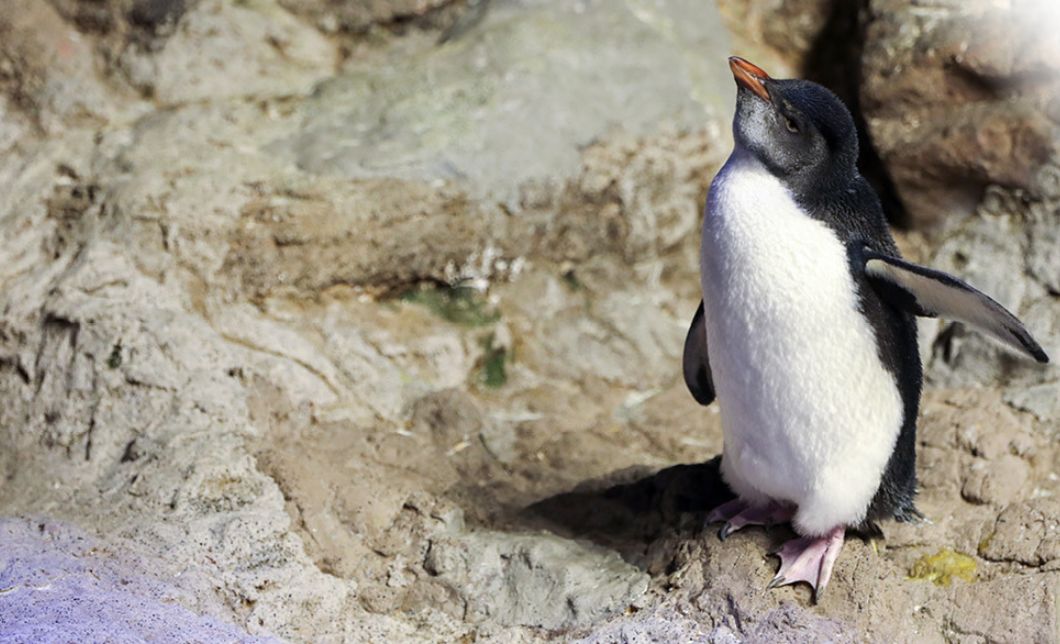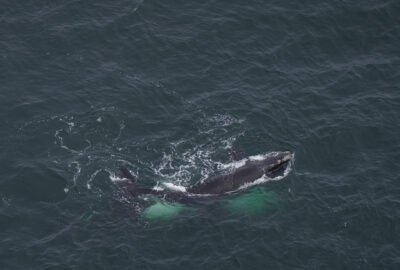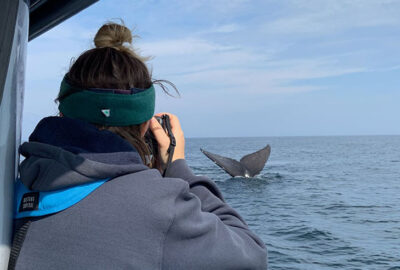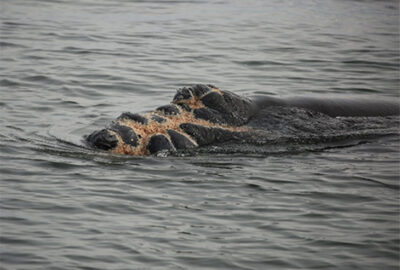On Thursday, April 25, The Trust Family Foundation Shark and Ray Touch Tank will be closed until 1:00 p.m. for routine animal care.
Campobello Team Rescues Right Whale “FDR”
A planned survey turned into a rescue mission as the Campobello Whale Rescue Team spent five hours freeing a six year old male from entanglement in heavy fishing line.
By Moira Brown, Ph.D. on Monday, September 12, 2016

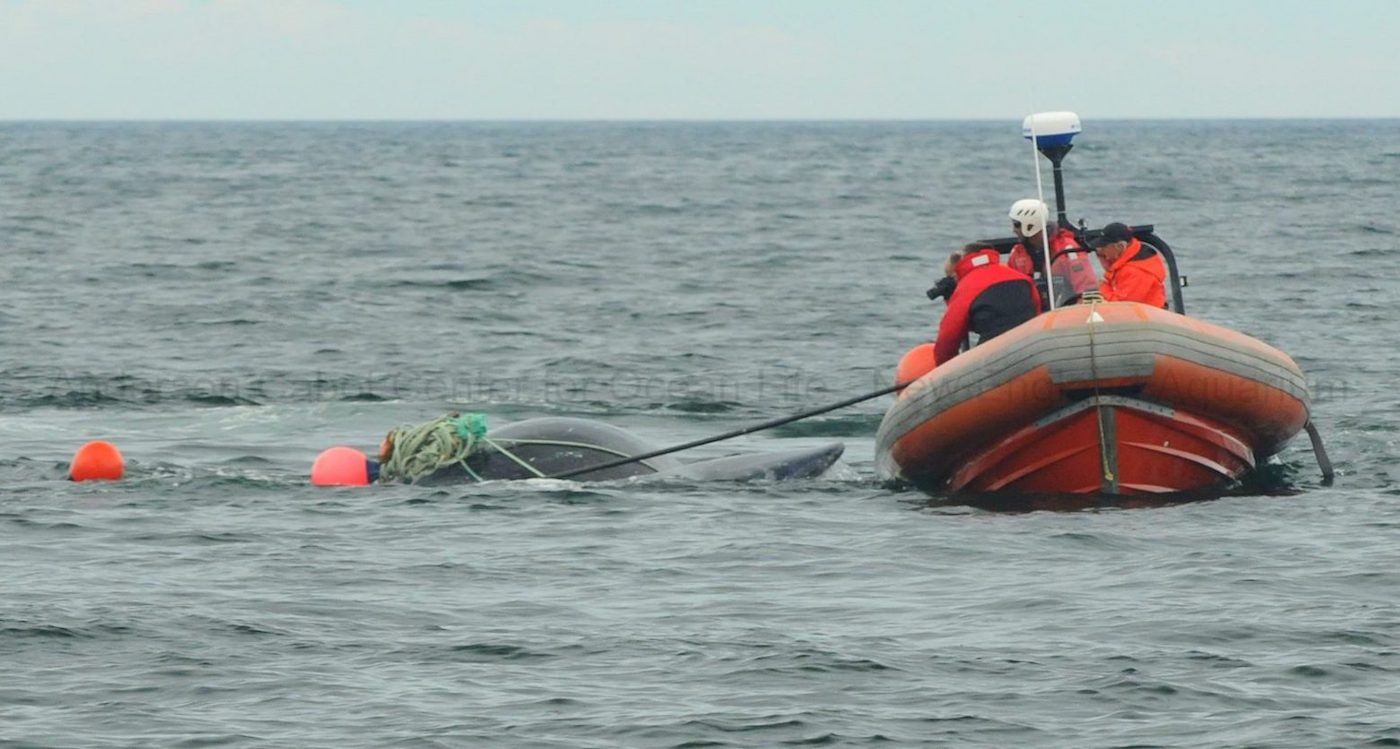
The right whale research team was just starting their survey day in the Bay of Fundy on August 13 when a call came over the marine radio from colleagues at the Grand Manan Whale and Seabird Research Station. They had found a right whale severely entangled in fishing gear (and we thank them so much for reporting it!). The survey plan for the day was abandoned; the goal was now to document the entanglement and stand by with the whale to keep track of the its location until help could arrive, which is critical in all entanglement situations.
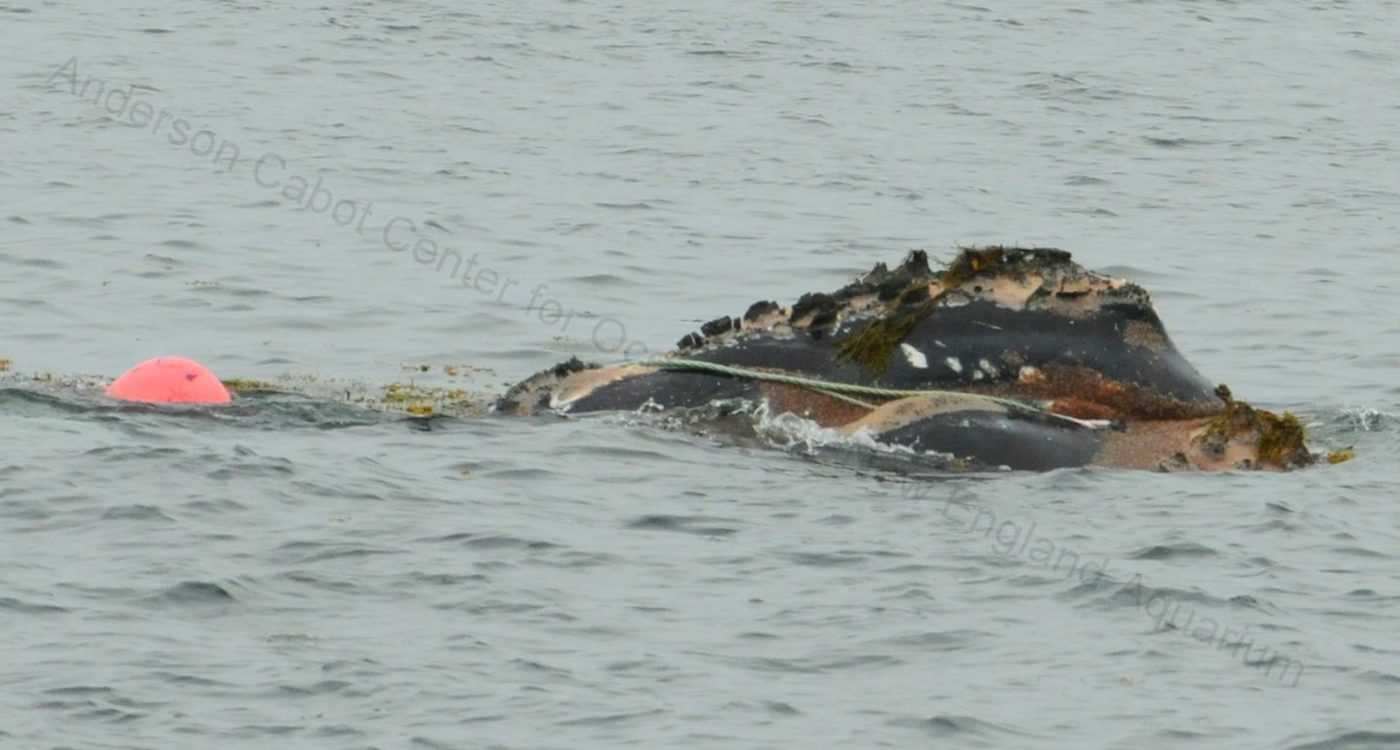
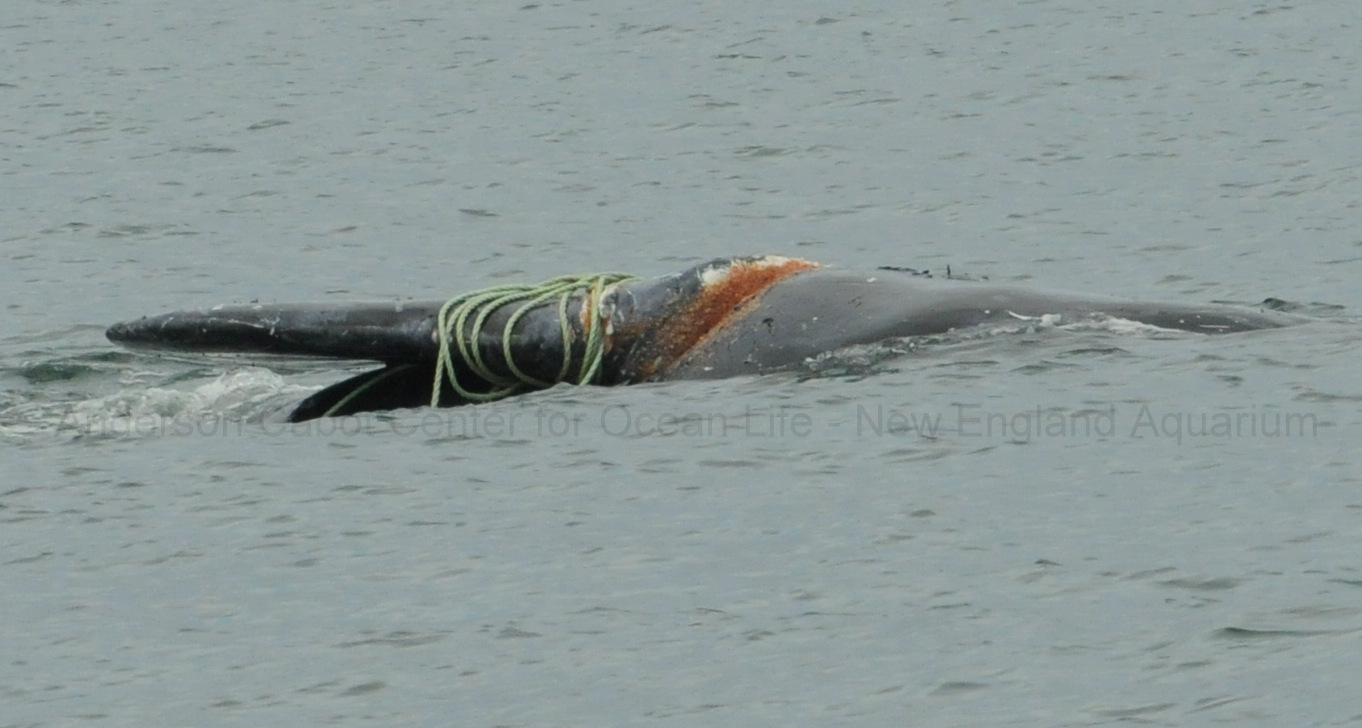
The Aquarium team identified the whale as Catalog #4057, a six year old male. He was previously disentangled in February 2014 by rescuers working in the waters off the state of Georgia. The deep scars across his head, blowholes, and around the peduncle are all a result from that severe entanglement, and it’s because of that rescue effort that he survived.
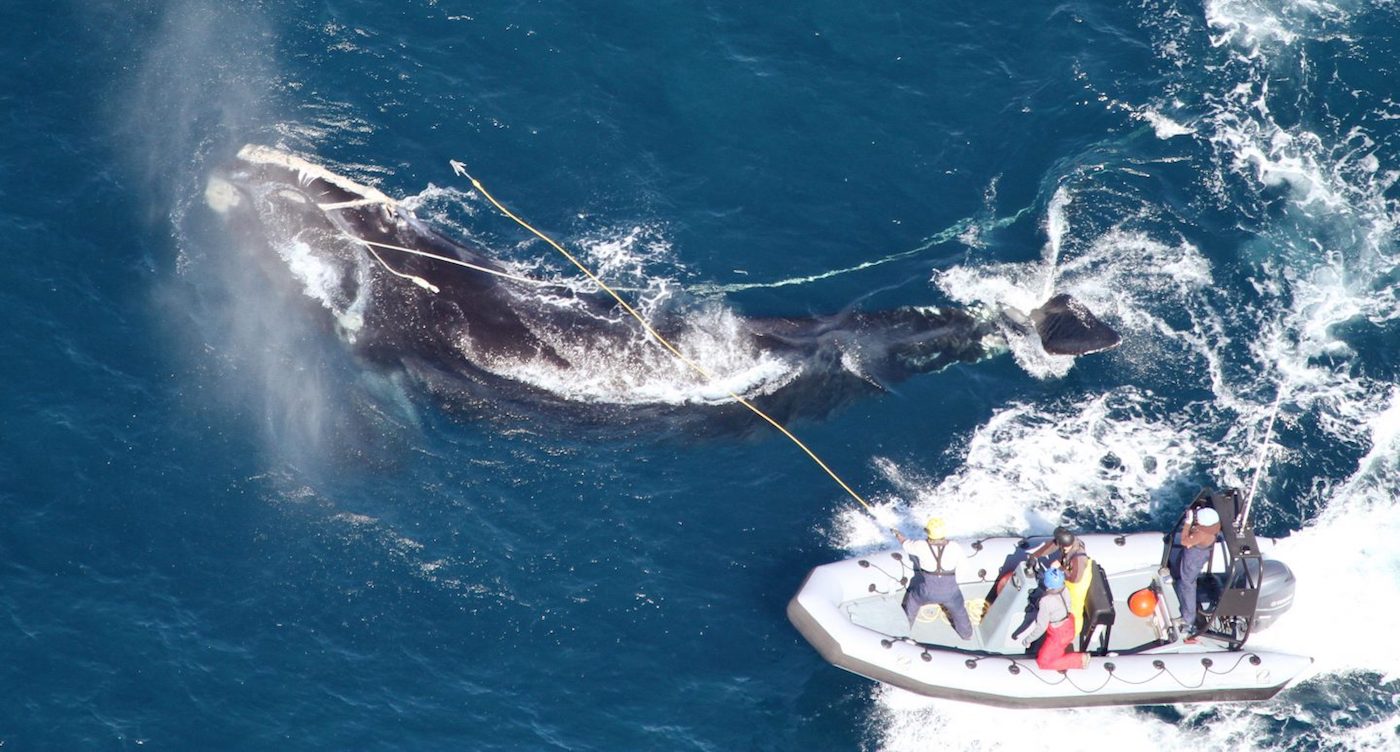
The call for help went out to the Campobello Whale Rescue Team (CWRT), a group of volunteers primarily composed of fishermen, who lend their time and services to disentangle whales from fishing gear. Within 30 minutes, the team was able to drop their work for the day, load the specialized whale rescue equipment on board, and start heading to the whale. Based on Campobello Island, about 25 nautical miles from the whale’s location, it was going to take them an hour to get there in a fast rescue craft (a 24 foot long rigid hull inflatable with two 150 horse power engines).
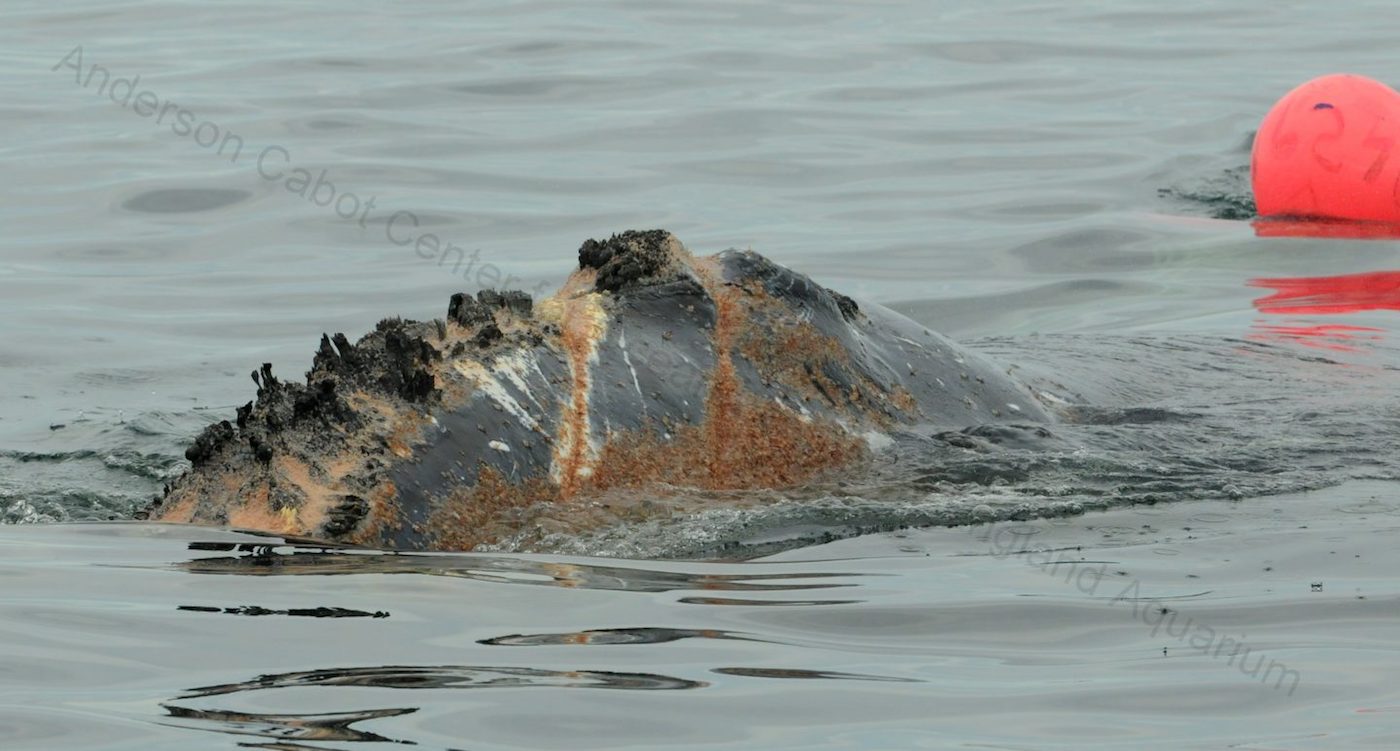
On this day, the whale rescue team was comprised of four members: two fishermen (Mackie Greene – team leader, and Joe Howlett), a retired fisheries manager (Jerry Conway), and an Aquarium biologist who volunteers with the team (myself — Moira Brown). After the rescue team arrived on scene, they reviewed the configuration of the gear and discussed the whale’s behavior with the Aquarium researchers. The rescuers learned that there were single lines through both sides of the whale’s mouth, multiple lines around the two flippers and the body, as well as a tangle of line and two buoys on the whale’s back. The whale was typically swimming slowly, not appearing to go on deep dives and not too agitated.
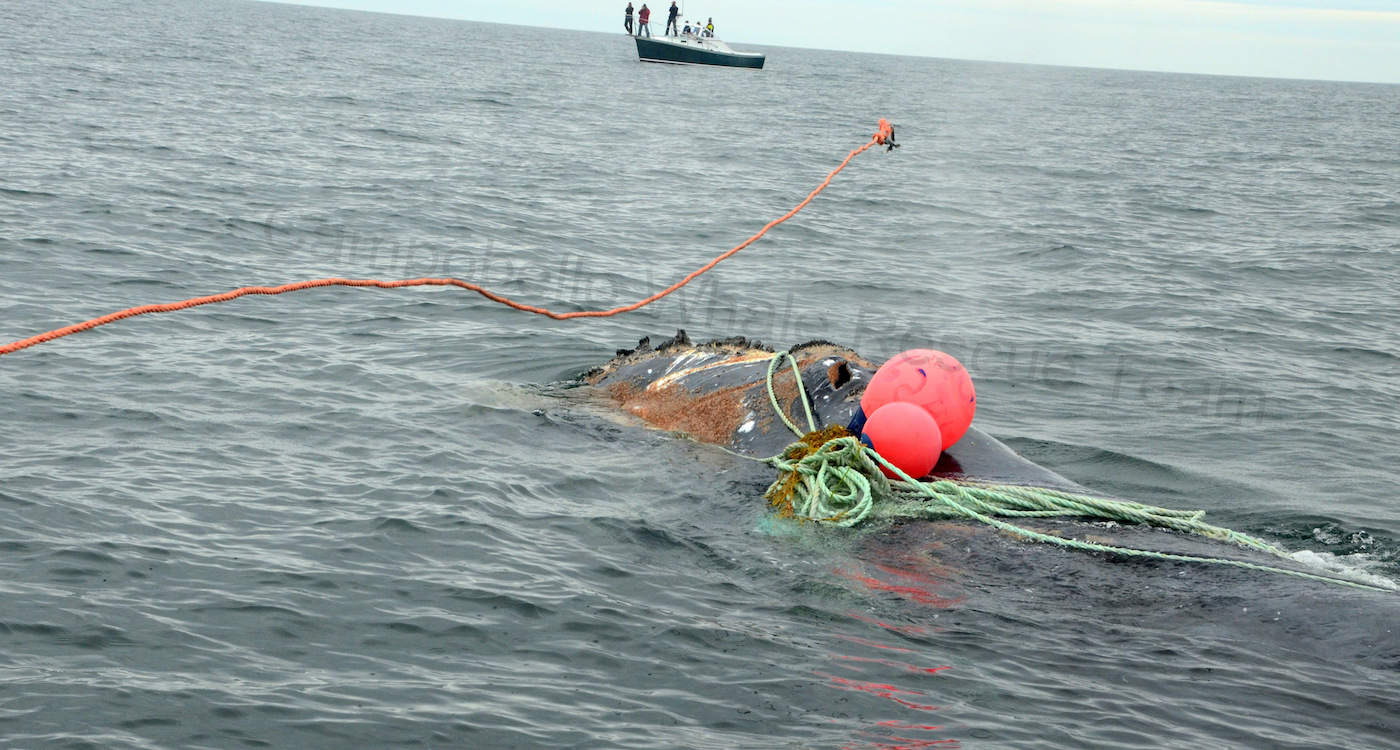
The Aquarium’s research boat Nereid stood by, staying some distance away so as not to stress the whale while CWRT went into action. The first step was to attach a “control line”– about 50 feet of rope with a poly ball buoy at one end and a grappling hook spliced into the rope at the other end. In an ideal situation, the grapple is thrown into the entangling lines on the whale, and the poly ball helps rescuers keep track of the whale while adding some resistance to the whale’s movement. Once the control line was attached to the entangling lines, we could all keep track of the whale while it swam below the surface out of view, planning the approaches for when it surfaced to breathe.
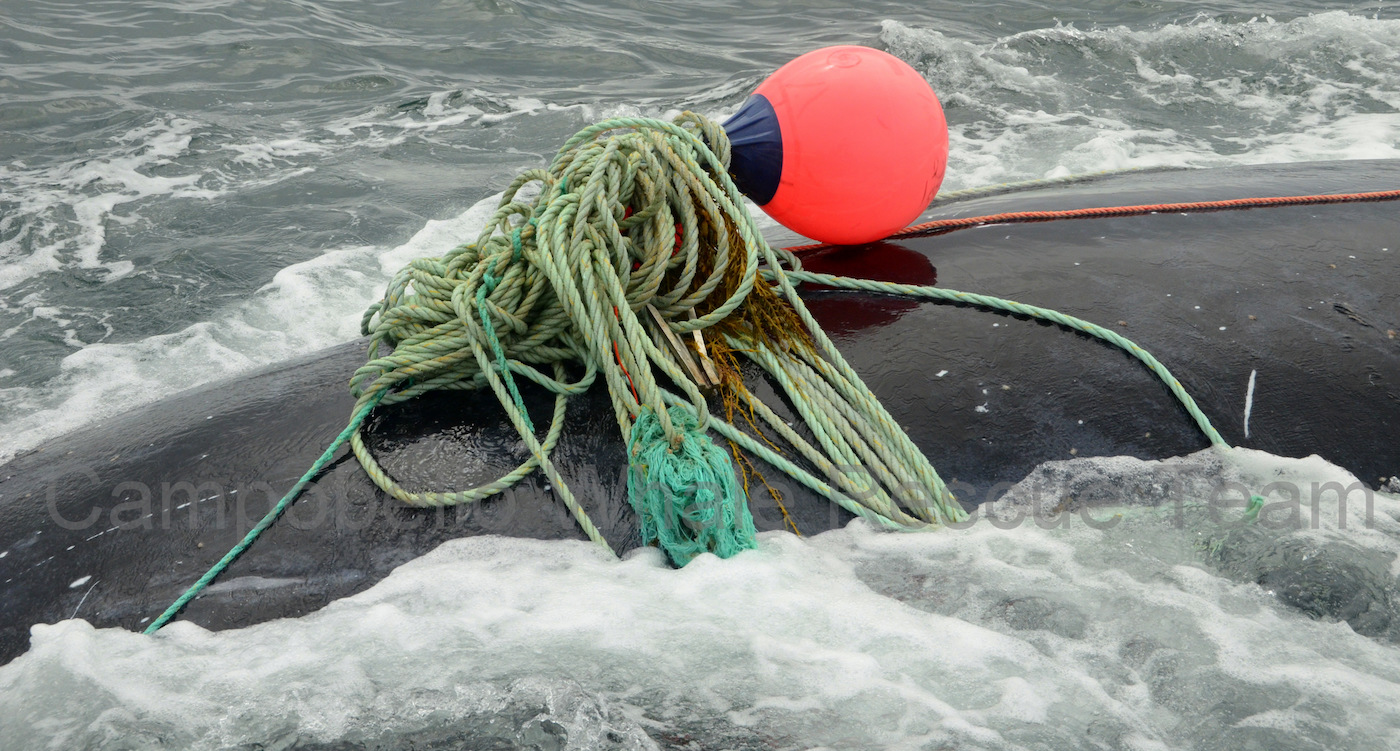
First, the rescue team focused on cutting the lines that were exiting the mouth. A common approach to disentanglement is to start cutting the lines at the head and front of body, and then work back toward the tail since that part of the whale is easier to approach. We use a variety of very sharp specialized knives, some of which look like a hook and are serrated on the inside, attached to the end of a carbon fiber pole. As the whale surfaces, the vessel approaches so that the rescuer can reach out, snag a line and pull hard to make the cut.
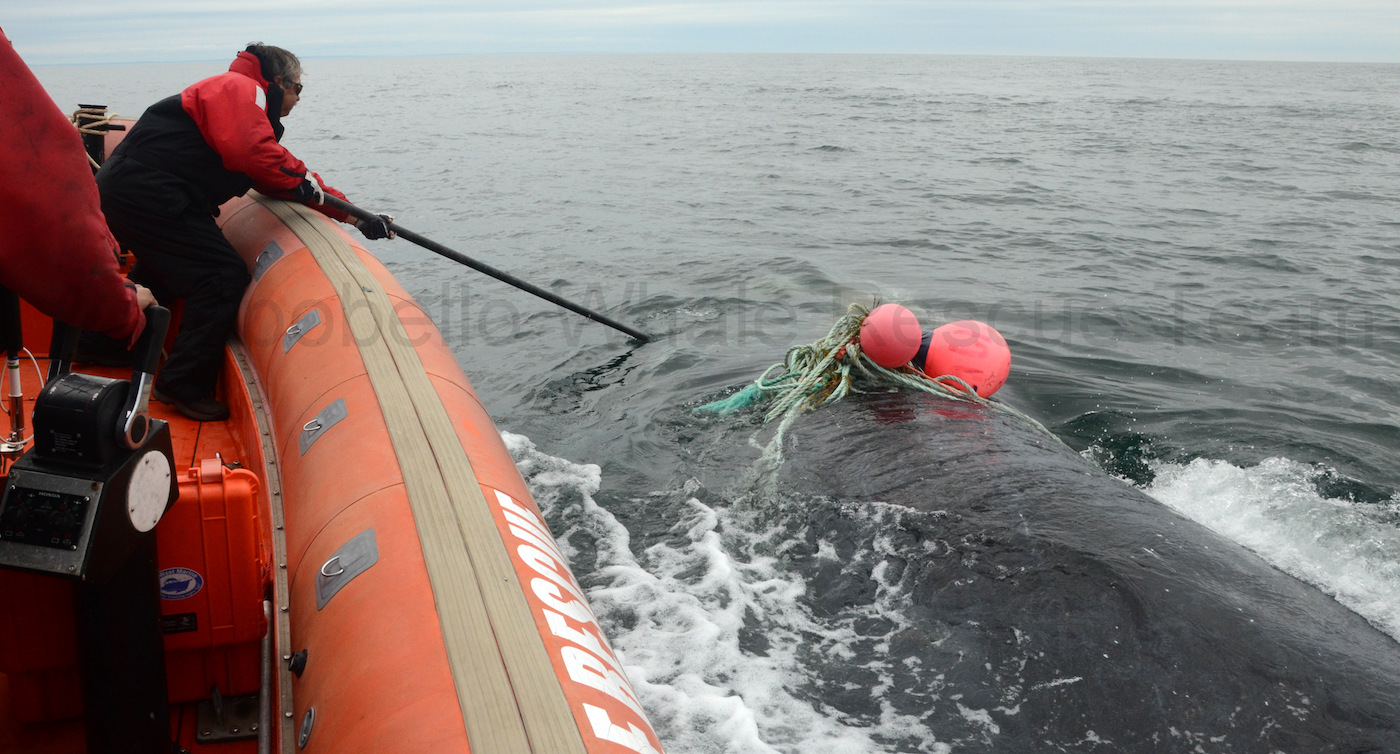

The CWRT spent five hours with right whale #4057. As the lines were cut one by one, the entanglement first moved toward the tail and then slipped over to the right side, eventually just hanging off the right flipper. One final cut and we all suddenly realized the whale was mostly free of rope. We later learned why the cutting was so difficult- the line measured 9/16ths of an inch in diameter. This is very heavy fishing line.
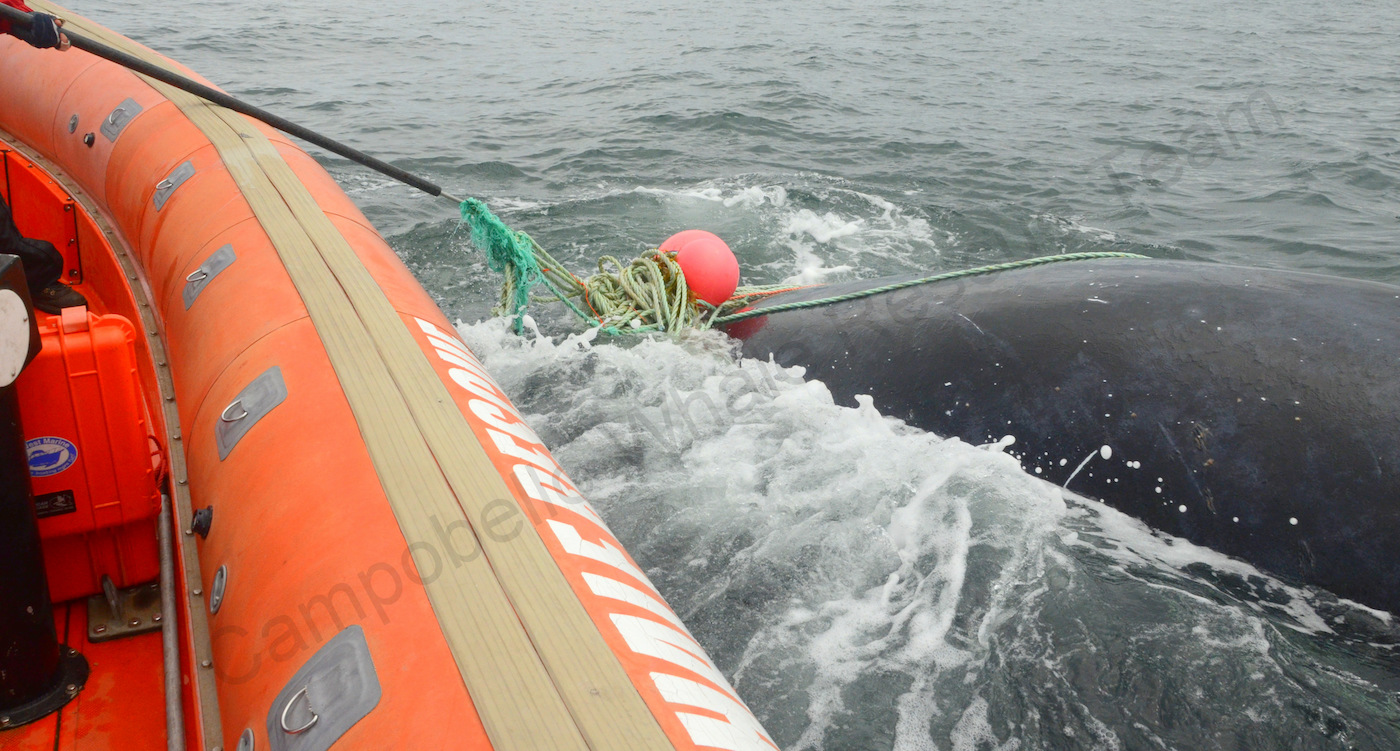
The gear will be shared with the Canadian Department of Fisheries and Oceans to try and learn more about the type of fishery this gear was used for, and where and when the gear was fished. This information is used to try to learn more about how whales get entangled and what can be done to help reduce the entanglement problem. Eighty three percent of the right whales in the Catalog have scars from at least one entanglement, and it is a problem wherever fishing gear and right whale habitat overlap.
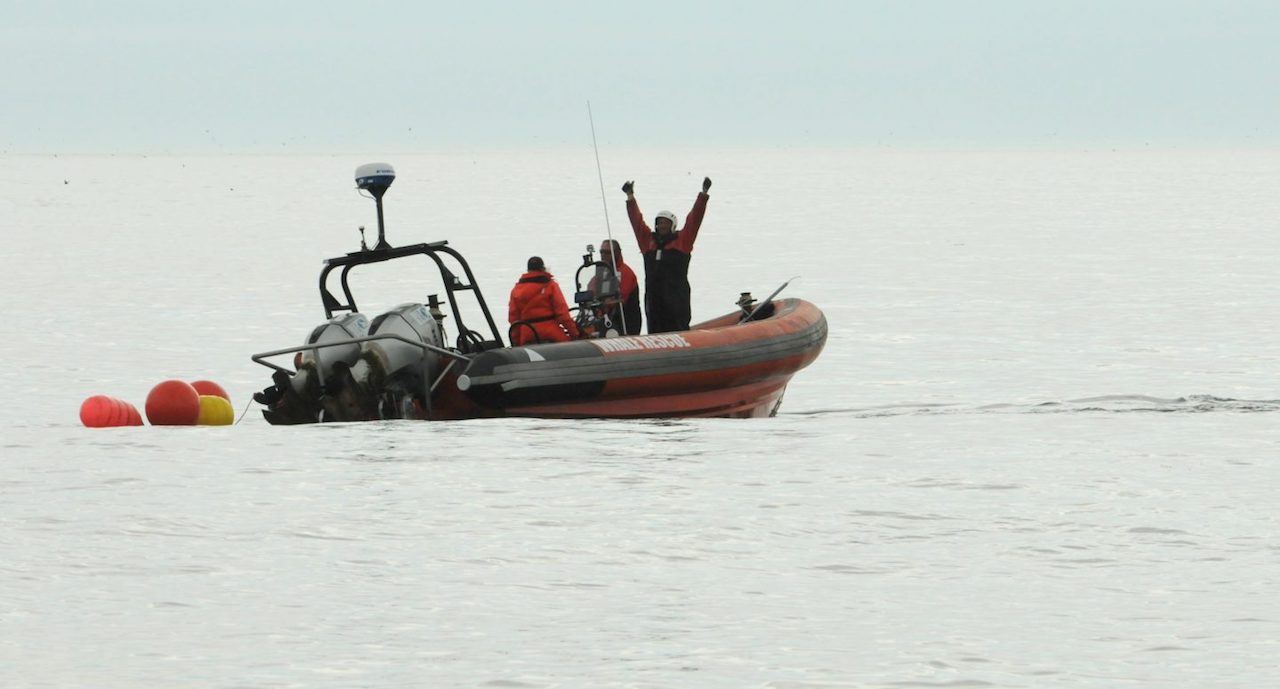
Right whale #4057 did not have a name, but one quickly gained support after the disentanglement. The Campobello team reflected on his successful disentanglement in 2014 off the coast of Georgia and the connection was made: Franklin Delano Roosevelt is Campobello Island’s most famous summer resident. He shared an affinity for spending the winters in Georgia and established a treatment center for polio there after he contracted the disease on Campobello. Given the connection between the two locales and the ability to overcome adversity, the right whale has now been named “FDR” after the President, and will hopefully have the good fortune of his namesake and survive to contribute to the recovery of the North Atlantic right whale.

